Galway women were centrally involved in the defining events of 1912 to 1922. During Easter Week, Cumann na mBan women acted as couriers and were present during the Irish Volunteers’ attacks in Oranmore and Athenry. Many Volunteers and Cumann na mBan members wanted to continue the fight, but once news of the surrender arrived in Galway, the forces dispersed. The promise of ‘equal rights and equal opportunities’ in the 1916 proclamation was sufficient for some republican women but gender equality was not realised by the Sinn Fein leadership. For republican women in Galway, the fight continued during the War of Independence.
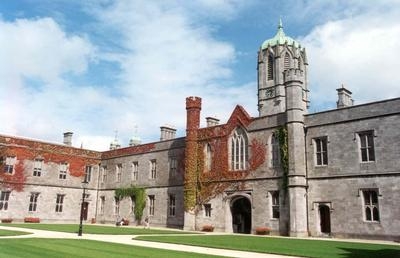
Mary Josephine Donovan (1887-1966) was born in Fairhill, Galway. She was educated at the Dominican convent, Taylor’s Hill and graduated with honours BA (1908) and MA (1909) from Queen’s College, Galway (later UCG and now NUI, Galway). She became an assistant to the professor of History, English Literature and Mental Science. In 1914, she was appointed first professor of the new department of History and remained in that role until 1957. She was also elected to the Governing Body of the university.
Mary Donovan was prominent in suffrage politics, acting as librarian to the Connnacht Women’s Franchise League and advocating equal pay and equality in the workplace. She married Jeremiah O’Sullivan from Birdhill, Co Limerick, in 1915. Donovan-O’Sullivan proposed a role for women in war recruitment and, in January 1916, was elected president of the local Ladies’ Recruiting Committee. Mary Donovan-O’Sullivan retained a lifelong interest in women’s equality, social history and Galway archaeological and historical studies.
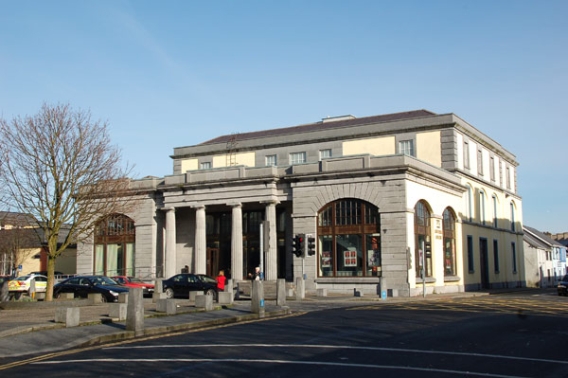
The Town Hall was an important site of women’s public effort and visibility in Galway. The prominent English suffragette Christabel Pankhurst spoke on votes for women in October 1911, and the Connacht Women’s Franchise League, established in 1913, held meetings there. Edith Young, president of the League and the first city woman elected as a Poor Law Guardian (in 1920), lived nearby.
Women participated in various ways in Gaelic League/Conradh na Gaeilge and nationalist public meetings. The first city meeting of Cumann na mBan was organised in the Town Hall in July 1914. During the war, the Galway War Fund, led by Augusta Clonbrock (1839-1928), held meetings in the Town Hall, and in October 1918, Mrs. St. Clair Stobart delivered a lecture, ‘The Story of Serbia’, based on her experience as a Red Cross worker during the Serbian retreat.
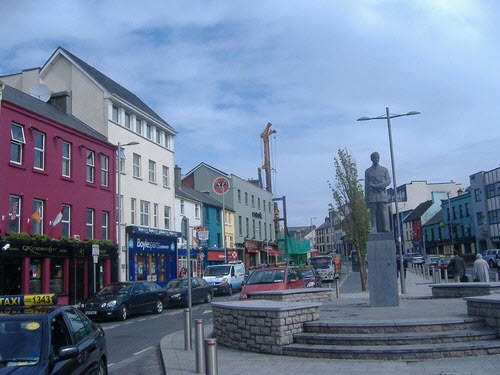
Statue of Liam Mellows, Eyre Square, Galway
In 1915, the IRB Military Council instructed Nora Connolly, the organiser of the Belfast Cumann na mBan, to accompany Liam Mellows to Galway to command the Galway Volunteers. On Easter Monday, 1916, Liam Mellows mobilised between 500 and 1,000 Irish Volunteers and Cumann na mBan activists to launch minor attacks in County Galway.
Nationalist women served prison sentences in Galway jail, mostly owing to the finding of seditious, republican documents during military house searches. Jailed women included Alice Cashel, CC.; Dr. Ada English, T.D.; Anita MacMahon; and Geraldine Plunkett Dillon. Click here to read Alice Cashel's witness statement.
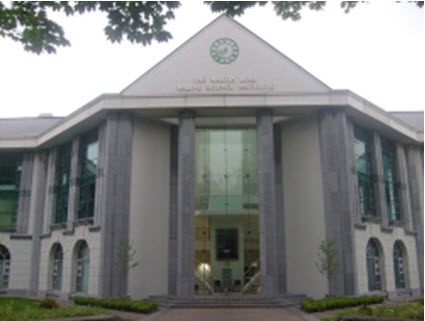
The attacks on the Oranmore RIC barracks and in Clarinbridge and Craughwell were thwarted by RIC forces and fire power; by Friday of Easter week, they were routed. Many Volunteers and Cumann na mBan members wanted to continue the campaign into Co. Clare but the rising was collapsing by then. Annie Barrett, Athenry, Co. Galway was awarded an Easter Rising medal. Mrs Brigid Malone, nee Walsh, Mrs Margaret MacEntee, nee Browne and Mrs Martin Conlon were couriers from Galway to Dublin during Easter week 1916.
Click here to read Mrs Martin Conlon's witness statement.
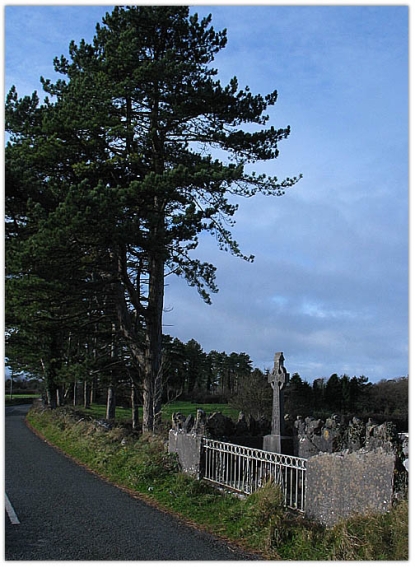
Loughnane monument, Shanaglish, Gort, Co Galway: memorial to Volunteers Patrick and Harry Loughnane
Volunteers Patrick and Harry Loughnane were brutally killed by RIC forces on 26 November 1920 after being taken from their home at Shanaglish, Co Galway. In his witness statement to the Bureau of Military History on the murders of the two brothers, Pádraig Ó Fathaigh of Ardrahan, Co Galway describes the reaction of Pat and Harry’s sister Nora Loughnane after seeing the corpses of her two brothers: 'Their souls are in heaven, of that I am confident; and they died for Ireland, so it really doesn't matter how their bodies look. They were ready to make this sacrifice for their country's sake and, because I have the same idea of nationality that they had, I, too, can bear this ordeal'.
Click here to see the full text of Pádraig Ó Fathaigh's witness statement.